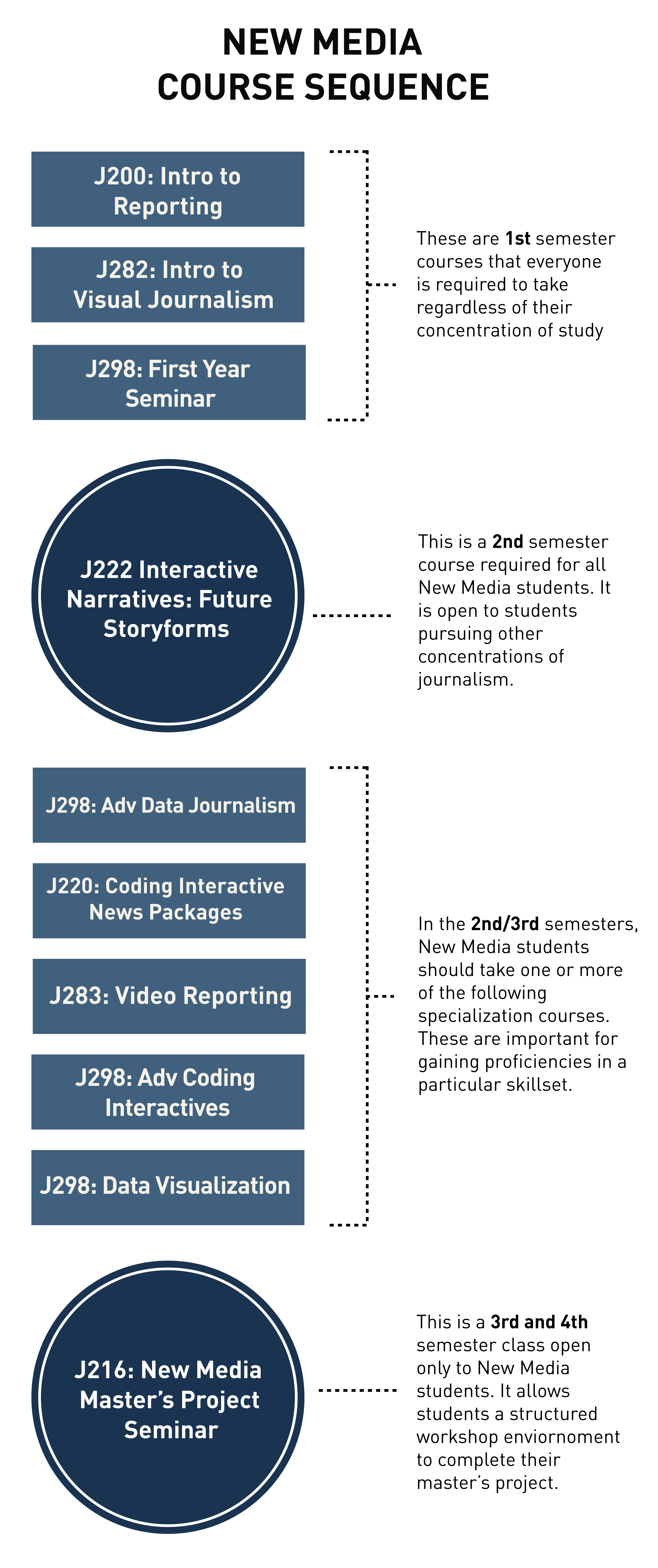Course Guide
Our New Media courses include an intensive combination of skills, practice, and intellectual rigor for not only producing richly engaging digital content, but understanding the nature of the web and how it works.
This is a course sequence for students wishing to specialize in New Media at the UC Berkeley Graduate School of Journalism.
Many of the classes are open to everyone at the school. But in order to gain a specialization, we require students doing a master's project in New Media take several of our skills-based courses depending on their specific area of specialty.
A qualifying New Media master’s project can be:
- A multimedia story that has multiple segments or elements with an intuitive navigation scheme and compelling overall design;
- A continuously published news site or blog featuring original and curated content,
- A prototype for a new concept or innovative idea related to digital journalism, performed as a research project and submitted as research paper with appropriate source citations.
Our New Media specialization currently focuses in the areas of New Media Visuals, Interactive Web Development, and Data Journalism. We may be expanding to include entrepreneurial journalism and social media journalism in the future.
Prospective students interested in applying to our program, please visit the official admissions page of the Graduate School of Journalism at UC Berkeley.
